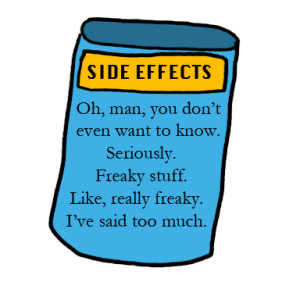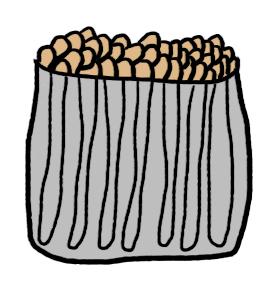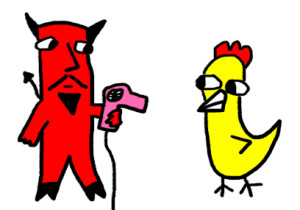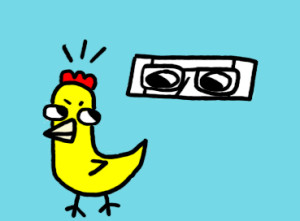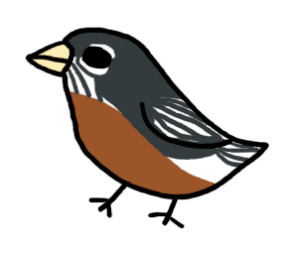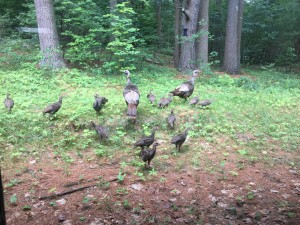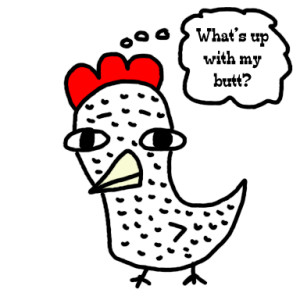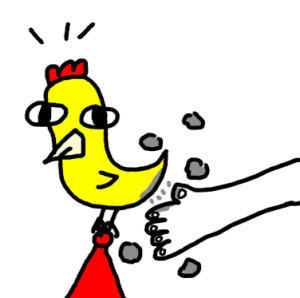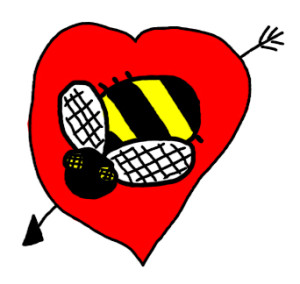A Mite Impatient
Friday, July 24th, 2015When someone I care about is sick, I worry a lot. Right now six people, er, chickens, I care about have mites, and so I get preoccupied with thinking about how to make sure this problem is taken care of. I’ve tried diatomaceous earth, and I’ve tried “poultry powder,” yet their butts are still featherless, and egg production is down. I powder them with one substance or another once a week, and yet I don’t see any progress. I even went into both our fireplace and wood stove and took all the ashes out and put them in the chicken run. This is so they could take dusts baths in the ash, which is supposed to fight mites. There are a few things I haven’t tried yet, and I’ve been reluctant to do so, since they all have side effects of some sort or another.
In my original post about the mites, I mentioned that Sevin dust is one big gun people turn to for mites when other cures fail. It’s mostly diatomaceous earth, but has poison mixed in. It’s a different poison from what’s in the poultry powder, and apparently quite bad for bees. It’s also not technically approved for use on poultry, so there’s that too. But I was worried enough that I was beginning to think that maybe it was worth a shot. But I just couldn’t bring myself to go through with it, so I looked into other ideas.
You can apparently use the type of flea and tick drops that you put on cats and dogs on chickens, but I get the feeling this may be a mildly sketchy, or at least “experimental” treatment. You need to use a very specific brand of the drop, one not easily had at any pet store, so you need to find the right source. You also have to apply it to a chicken, which seems tricky. I have had a hard time putting this stuff on dogs, and they sit still. A squawking, unhappy chicken in one hand, and flea and tick juice in the other is not my idea of a good time. And to top it all off, if you go this route, you can’t eat the eggs for weeks afterwards. I like eating the eggs. I’m good at it. I also share them with people and spread chicken goodwill. Throwing out large amounts of eggs was just not something I wanted to do. If you can’t eat them, I’m sure they can’t go in the compost. Dumping them in the trash seems so wasteful. I put this idea on hold too.
The last option is to give them a flea dip. This, again, got into the weird territory of “you can only use very specific brands of flea shampoo that are hard to find and probably expensive.” Also, you have to dunk the chicken in a bucket of water. Frankly, I have had an easier time getting my finger up a chicken’s butt than I have soaking them in anything. Plus, then I’d have six chickens that then need to be dried off (Boss Chicken doesn’t seem to have the mites, for some reason). I was beginning to develop a vision of what hell must be like. Blow drying six chickens is straight out of Dante.
Back in the winter our local feed store closed. A few months later, it opened back up under new ownership, much to my surprise and delight. I swung by the other day to get more chicken food and bedding, and a guy who worked at the old version of the store was now working at the new version. He had always given me good advice in the past, so even though I was there for something else, I asked about the mites, and what I could do. He asked if I wanted an organic solution or otherwise. I said at this point I’d try either. I mentioned that I had tried diatomaceous earth, and he said “well, that’s the organic option.” Then he showed me a different brand of the poultry powder than the one I had. I said I had tried that too, but their feathers weren’t growing back, and the eggs were less frequent than usual. He said this was pretty typical, and as long as I got some anti-mite stuff on the chickens, in the nesting buckets, and in the coop, the problem would go away, but it might take a few weeks before I noticed an improvement. They need time to recuperate, and sometimes that takes longer than I like. On the plus side, I’m doing everything right. Everything except being patient, that is. I can work on that, and see if I’m better at it by the time my birds have some new butt feathers. I think it may take even longer than that. My impatience is much peskier than mites, and just slightly less bitey.
(CREDITS: Theme music: Chicken In The Barnyard by Fireproof Babies, Music bed: Memphis Tennessee by The Gulf Coast Seven)
